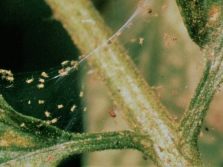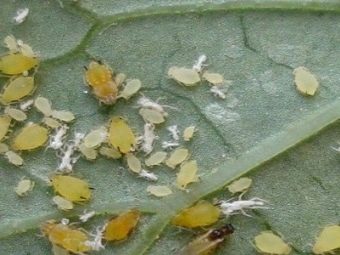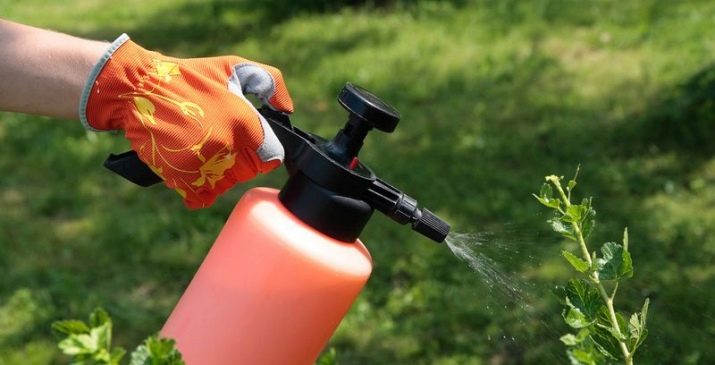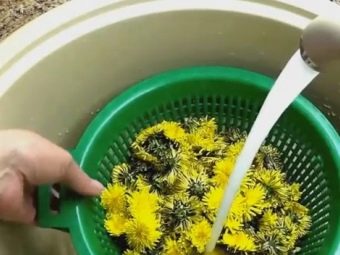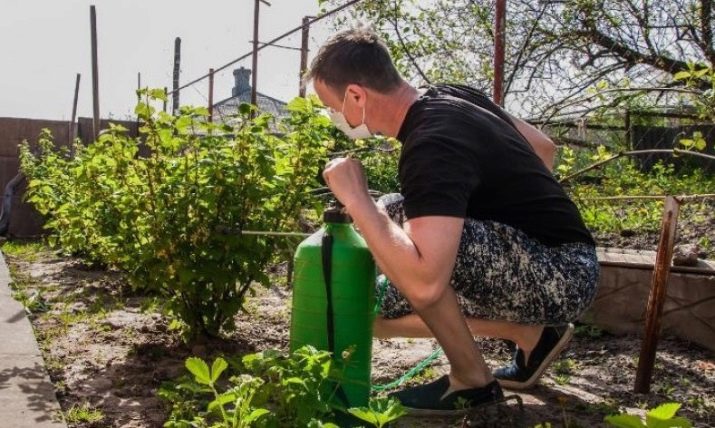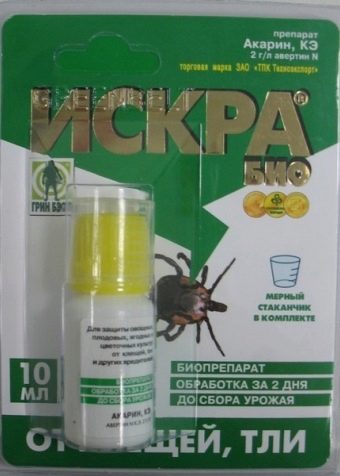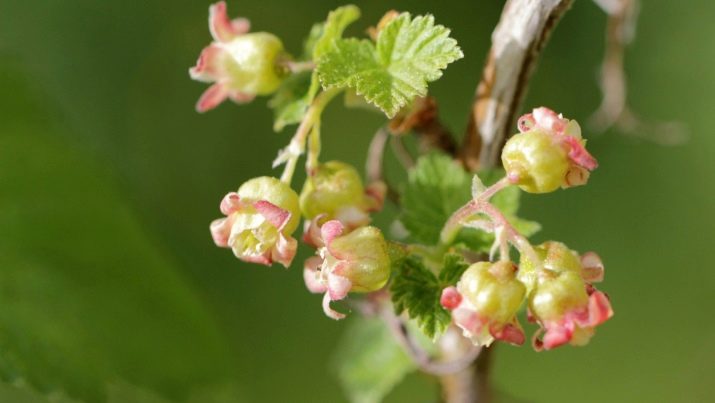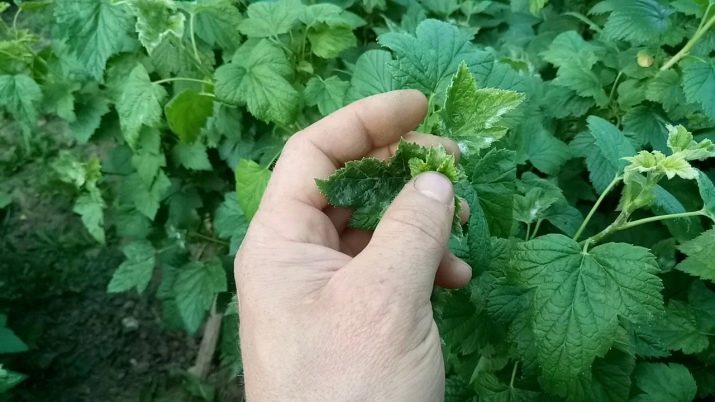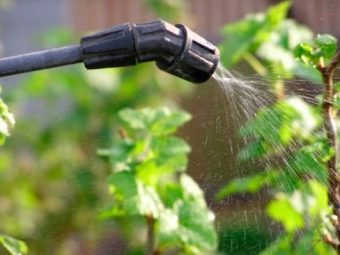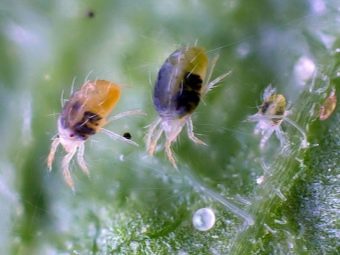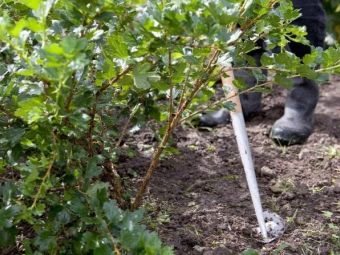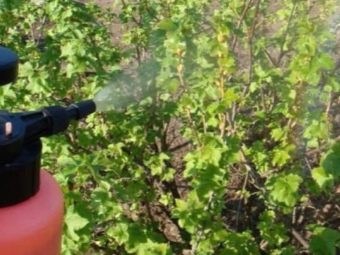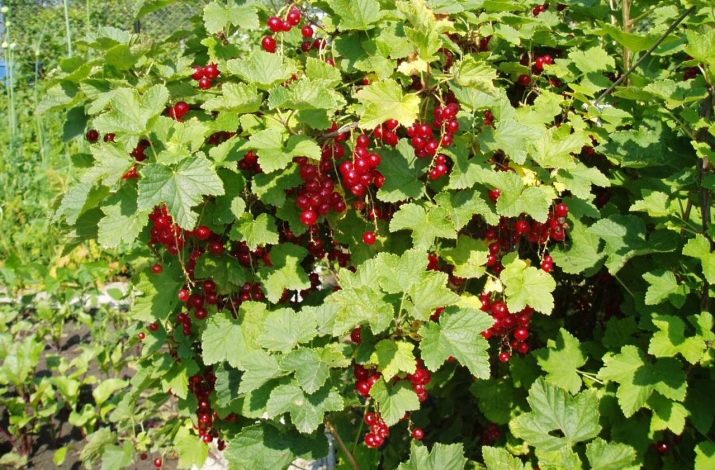How to deal with spider mite on currants?

Many gardeners grow currants, as it is an extremely unpretentious plant that gives people healthy and tasty berries. Its leaves and shoots are often used to prepare various decoctions and infusions, added to tea, dried. You should properly care for the culture, to ensure that it is not attacked by various diseases and insects. The most insidious and dangerous pest - spider mite. It has a small size, is able to destroy the entire crop. Because of its impact, the plant dies.
Causes of pests
To spider mite could not spoil the crop, it is necessary to prevent its appearance.
There are several reasons why a bush may be in danger.
- Pests are very actively propagated in dry weather when the temperature is elevated. In the summer they are extremely dangerous, since at this time there are the most convenient conditions for them.
- If the soil lacks the necessary organic compounds or any other trace elements, then pests can appear on the shrub. Cultures that are weak due to the lack of organic fertilizers have poor resistance to diseases and parasites.
- A crop may be attacked by a pest due to other plants that are close to it. Therefore, if one bush is affected, it is necessary to get rid of the affected areas and pests as quickly as possible, otherwise they will multiply and spread.
- Another reason is too dusty bushes. Ticks like these conditions, so you should spray the plant so that they do not appear.
If you treat this carelessly, do not eliminate the causes of the appearance of the pest, it will certainly attack the plant and leave the gardener without a decent harvest.
Females in 24 hours are able to lay two hundred eggs. It is necessary to conduct a comprehensive struggle to get rid not only of adult ticks, but also of eggs.
Signs of defeat
Initially, the disease can manifest itself in the form of points of yellow color that are on the leaf plates of the plant. These marks are traces of tick bites. Soon the leaves turn yellow, and then begin to dry and die. The plant becomes weak. Sometimes there may be a small cobweb on the bush. This also indicates that the culture is affected by a tick. Through the web pests create nests. In the spring, the invasion of ticks is more active, at this time the females begin to lay eggs.
To find out that a bush is infected, you should carefully examine it and pay attention to a variety of symptoms:
- If mites settle in the kidneys of a culture, in winter they swell and become large.
- If the pests are on the bush for quite a long time, young shoots will not be produced on it. If, however, the plant begins to grow, the leaf plates look sickly and defective. When tick-borne buds bloom, gardeners can see a lot of pests.
- In the summer, the culture develops poorly, the berries fall, they do not have time to ripen, the shoots are crooked and weak.
Means for processing
Some believe that it is better to get rid of pests using folk remedies, since they are more accessible and extremely effective. Others use chemicals. The second option is better to use if popular methods have been unsuccessful. If a person decided to use a chemical agent, you need to process the plant only before the bush began to bloom, since the drug gets into the pulp of the fruit, spoils it and can harm the human body.
If the plant has been processed after flowering, you should not eat the crop in food.
Folk methods
The safest options for getting rid of the tick bush are folk methods. Virtually all ingredients are free, as most recipes include available tools or parts of any plants that grow everywhere.Infusions and solutions created from such ingredients cannot harm people or plants. Get rid of insects by using a powerful jet of water.
Similar watering of a bush washes them from sheet plates. But this method does not save the plant from the pest forever. Ticks do not like high humidity, so you can try to treat the culture with water and carefully cover the film. This should be done in the summer when the weather is hot so that the water will evaporate faster. An extremely high humidity is created inside the film, which can kill the parasites.
Good remedies for any type of mite are regular infusions, the main ingredient of which is plants with a strong odor or bitterness.
There are many compounds that will help protect you from pest attacks:
- If there is a small amount of ticks, the plant should be treated with an infusion made from garlic. One hundred and fifty grams of husks and dried leaves of garlic must be poured with ten liters of water (it should be warm). Insist 24 hours, then spray the culture. If dry leaves are not available, you can replace them with two hundred grams of garlic. In this case, the tool is infused for several hours.
- Incredibly effective remedy - mustard infusion. Two hundred grams of dry mustard is dissolved in a bucket of liquid, infused for 12-14 hours, then filtered. The shrub is treated with the resulting agent.
- At any site you can find dandelions, which are used to scare away the pest, because ticks do not like this plant. Two hundred grams of roots and fifty grams of dandelion leaves are poured with ten liters of water, then the product should be infused for three hours. After being filtered. Shrubs should be processed twice - when the leaves bloom after the flowering period.
- In March, you can use black bleached. Two kilograms of the roots and leaves of the plant must be poured with water and boiled for several hours. Then add water to the total amount of ten liters. The plant is poisonous, so when handling the bush, you need to use gloves.
- The infusion of horseradish - the most effective option to help fight parasites. Kilogram of leaves should be crushed with a meat grinder, and then insist 40-60 minutes in three liters of water. You can use the roots, but they need to take two times less.
Solutions containing ash and soap are capable of creating a special film on the sheet plates so that the pests cannot feed on them. Thanks to them, ticks can die or stop breeding, lose activity, which will help to cure the plant. The main disadvantage of folk methods is the need to process the plants many times during the entire growing season (the interval is five to seven days).
Positive quality - pets and people will be safe. Spraying plants with similar infusions can be done even when the crop is ripening.
Chemicals
It should be remembered that a variety of insecticides will not act on ticks, so you should use only acaricides and insectoacaricides. There are many different drugs that guarantee one hundred percent disposal of the plant from these pests. The most popular and safest of them are drugs that contain colloidal sulfur, as well as hormonal acaricidal agents: Envidor, Nissoran, Kontos, Forbid 4F.
They are used when female ticks begin to migrate, and also if it is necessary to remove a large number of parasites - in the spring, at the time of the leafing of the plates. In order for the effect to be good, it is necessary to spray several times (interval - 10-12 days). After harvesting the fruits from the shrub, more effective and powerful preparations (organophosphate acaricides of systemic action) should be used: Rogor-S, Bi-58, Phosphamide.
If the plantings are still young and do not bear fruit, they can be sprayed with acaricides containing active substances based on dimetoate: Dimethrin, Accent, Danadim, Pilarmax.
Popular products used by many gardeners are several products:
- Iskra-Bio - a tool that for quite a long time rests on the leaf plates of the plant. They can handle berry bushes before harvesting, as it is safe for human health. Extremely effective.
- "Kleschevit" - A worthy drug, but does not hold on the leaf plates for more than five to seven days.
- "Tiovit-Jet" - does not have phytotoxicity, keeps on the leaves for a long time.
- "Bitoxibacillin" - may act slower than other means, on the sheet plates is two weeks.
- "Fitoverm". The expiration date is 24 hours, the pests quickly become addictive to the drug, so it is not always worth using it.
- "Fufanon Nova" - practically non-toxic, has not too strong smell.
Treatment process
Gardeners should begin treating the crop immediately after symptoms of mites appear. It is necessary to handle the bushes in the spring, which is most effective. In the summer, it is extremely difficult to remove pests from the culture, as they actively proliferate.
Spraying the crop begins before it blooms and the ovaries form. Otherwise, the grower may lose the harvest.
There are a large number of methods suitable for different types of currants. Before treatment, you need to get rid of infected leaf plates and burn them. You can use sharp odors to scare away. It should be placed around the plant a small number of jars, which will be turpentine or ammonia, then cover the culture film and leave for a day.
A few tips on how to properly treat currants:
- If chemicals are used, it is important to familiarize yourself with the method of application. Each package has an instruction that says how to prepare the product. It is not necessary to adjust the composition of the solution or the dosage, it is necessary to strictly follow the recommendations of the manufacturer of the drug.
- To get rid of spider mites is extremely difficult, so the very first remedy may be useless. In this case, the drug should be changed to another, which will be based on other poisons.
- After the infected branches are cut, it is not necessary to leave them in the garden even for a short time, it is strictly forbidden to throw them on the ground, otherwise the parasites can move to healthy plants located close by.
Consider how to use chemicals to save the shrub:
- The weather should be dry and windless. The sheet plates are thoroughly moistened with the prepared agent both from above and below.
- Culture should be processed 2-3 times, at intervals of 4-5 days.
- It must be remembered that ticks develop resistance to the drug extremely quickly, so it is better to alternate different drugs. For example, "Sunmite" is a worthy tool that has proved itself well. It helps to get rid of both adults and eggs, but rather quickly becomes addictive, so sometimes there are insensitive to the means of the population of parasites. It is used only once a year.
The extermination of parasites occurs in a certain way:
- You can get rid of only those ticks that eat processed greens. From it they get inside a substance that inhibits the vital processes of pests, which contributes to their death. Drugs can kill adult ticks and their larvae, but not eggs.
- Tick families cannot die instantly. The agony lasts twelve hours.
- It is necessary to carry out three or four treatments at intervals depending on weather conditions. If the temperature is up to thirty degrees - 5-6 days, above thirty - no more than three days.
Prevention
To gall mite could not destroy the plant and the next harvest, it is necessary to prevent its invasion. It is much easier than saving a culture from its influence. If the bush is strong and properly looked after, it has good immunity and high resistance to attacks of pests and diseases. In order for the culture to grow up healthy and strong, you need to carry out some care activities.
- Before planting it is important to disinfect the planting material. The solution is prepared very simply: forty grams of colloidal sulfur, ten grams of “Agravertina” and 10 liters of water.
- In March, should be done sanitary pruning. It is necessary to get rid of infected, damaged and dried branches. No need to leave hemp, as they begin to develop various diseases. Removed and old shoots. The bush is thinned out for good airing.
- It is required to find a special support in order to raise the branch culture above the soil. This measure contributes to the preservation of branches during the period of ripening. Without supports, they will break off as the harvest is heavy. Any branch damage is a gateway through which infections can weaken the plant.
- From the soil around the plant, you need to remove various debris, and then burn it. Quite often, due to it, comfortable conditions are created for the life of parasites and the occurrence of pathogenic bacteria, which cause the culture to be damaged by diseases. Spider mites overwinter in fallen leaves.
- After the snow cover is gone, loosen the tree trunks so that enough air enters the compacted soil.
- When the growing season begins, you need to make in the ground feeding, containing a nitrogen. It helps to stimulate the formation of ovaries.
- There should not be a lot of weeds in the garden, as there can be a variety of pests on them in wintertime, including buds. In March, they move to shrubs.
- Currants should be propagated by unaffected shoots or seedlings that are already rooted. To prevent the occurrence of affected plants, you need to warm them up in boiling water (no more than forty-six degrees) before planting for fifteen minutes.
- Foliar fertilization and regular application of nutrients to the soil will help strengthen the plant's resistance to any parasites.
- In the spring it is necessary to whiten the bushes that were affected last season. This allows gardeners not to worry that the mites will move up and attack the plant again.
Resistant varieties
Some believe that it is better to immediately purchase a variety of currants that is resistant to various diseases and parasites.
There are many options from which you can choose a pretty good one for any gardener. They are resistant not only to ticks, but also to many diseases.
- "Early Potapenko." Fruits appear quickly, berries are sweet, large. Bushes are compact, not too tall. The disadvantage of the variety is that it is aging rapidly. However, it has a high resistance to parasites.
- "Pleasing" is a vigorous plant, has large, juicy berries. The bush is tall, able to calmly survive severe frosts in winter, droughts and heat in summer.
- "Vigorous" has a small number of leaf plates, low, fruits are large, shaped like a plum, have a high density and sweet taste.
- "Nara" - the bush of a grade has the average size, branches sprawling and curved. The fruits are extremely large and sweet, the crop ripens early.
- Cyprian - early variety with large berries. Skoroplodny, samoplodny. The bush is large, has an average height.
In order for a bush of black or red currant to please the gardener with a large and healthy harvest, it is necessary to invest a large amount of time and effort in it.
Only then will the culture develop properly, remain healthy and give the owner sweet fruits and pleasant emotions.If you do not follow the health of the berry shrub, currant pests and diseases will cause its death.
It is better to take steps for prevention, to protect yourself from such problems and not worry about the health of your plants, which are constantly at risk.
On how to deal with spider mite on currants, see the following video.

